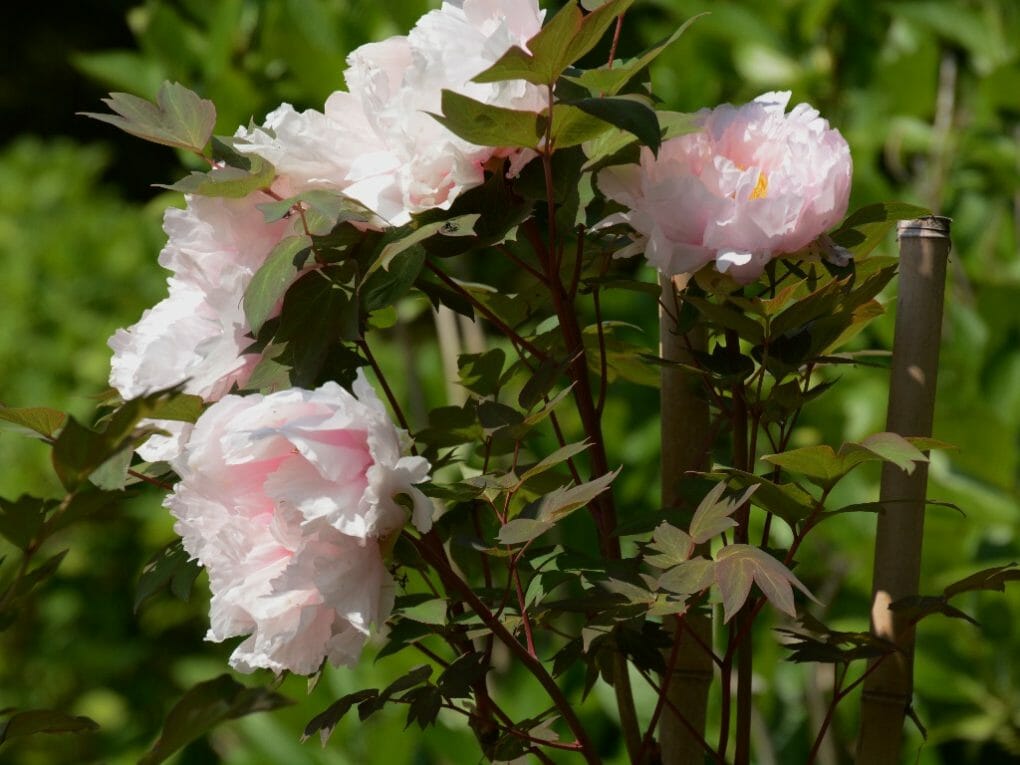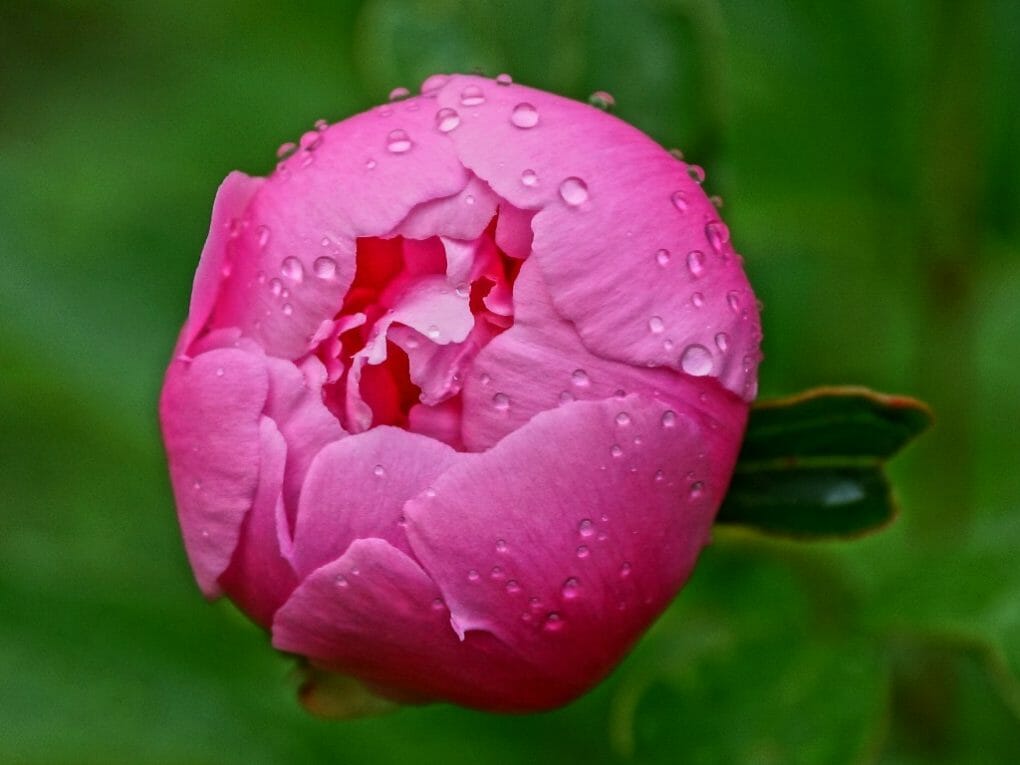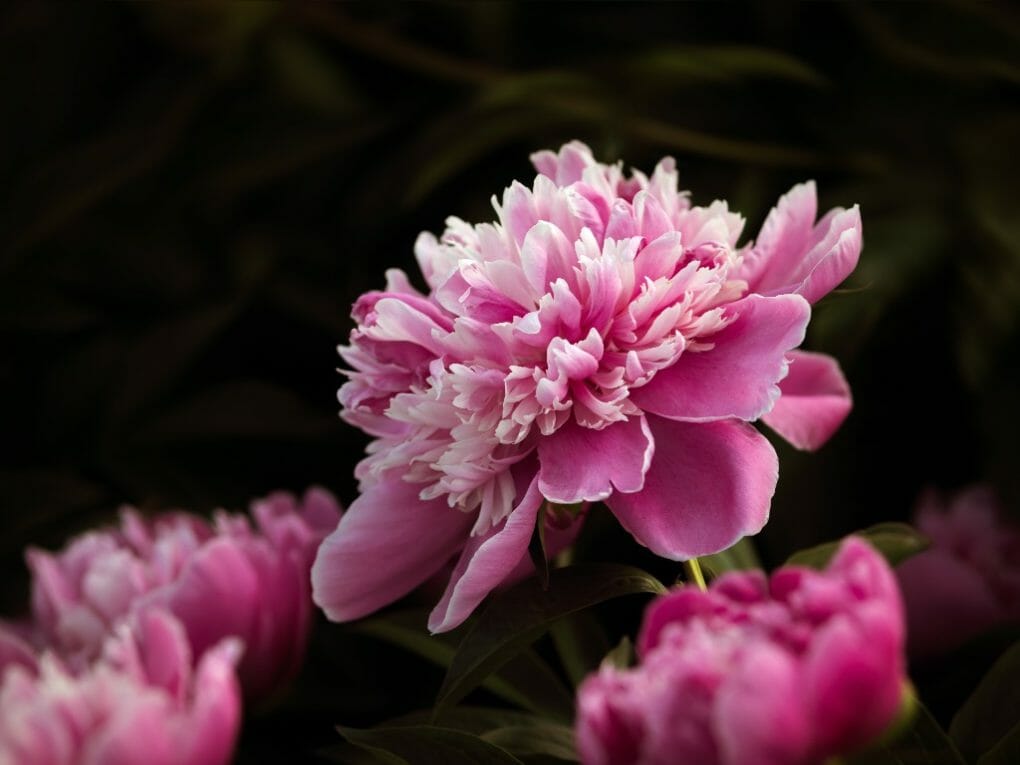When Do Peony Shoots Appear? Know the Color pf Peony Shoots

In August, peonies make dormant buds at the base of each stem. These are called “eyes.” These dormant “eyes” will grow into a peony bush the next spring if planted 1 1/2 to 2 inches below the soil’s surface. If you’re unsure how deep to plant a bush that’s already grown, carefully scrape the soil around a few stems in the fall to see how deep the young “eyes” are at the base of each stem. Rarely does a peony bush not bloom because it was planted too deeply. In our fields, we drop thousands of roots into a furrow each fall without measuring how deep they are planted. Roots tend to fix the depth at which they were planted by making dormant eyes at the right depth as they grow. Too often, people give quick advice that leads to peonies being dug up and replanted, even though they don’t know that when peonies are moved, they are often set back and have to wait longer to bloom. Once planted, peonies do best if they are left alone.
Table of Contents
Color of Peony Shoots
The shoot buds or eyes can be white or pink and are located on top of the crown. Herbaceous peonies are typically planted bare-root with the crown and buds still attached (at least three to five). They are typically acquired from a nursery or divided by a hobbyist gardener from the roots of an established plant. Both of these options are common.
Depending on your geographic location and the type of peony you’re growing, peonies will begin to bloom sometime between the end of spring and the beginning of summer.
You can stretch out the peony season over many weeks and continue to enjoy those lovely blooms for as long as possible, thanks to the fact that many nurseries stock varieties that bloom early, in the middle of the season, and late in the year.
Peonies are hardy in Zone 3 and grow well in Zones 7 and 8, located further south. In most of the United States, the formula for success is straightforward: full sunlight and soil draining well are required. Peonies thrive in colder winters because they require chilling to produce buds.
Growing Peonies
Climate
Herbaceous peonies can only be grown in areas with cool weather and cold winters, such as Tasmania, Victoria, and mountain districts. This is because the peonies require the cold to initiate the flower bud formation. Tree peonies are another type of peony that thrive in colder locations, but they can also be grown in areas with a chilly temperate temperatures.
Aspect
Peonies, including herbaceous and tree varieties, should be grown in full sun and protected from harsh winds. A location that receives only partial shade is preferable in regions that experience warm summers.
Soil
Plant in rich, deep, wet soil with good drainage that has been amended with compost and manure that has had sufficient time to decompose. Herbaceous peonies require the pH of the soil to be neutral, whereas tree peonies prefer a more alkaline soil; therefore, dolomite lime should be added and worked in thoroughly before planting.
Water

Keep soil moist but never wet. Watering the soil throughout the summer is important to keep it cool and prevent it from drying out. Tree peonies are drought tolerant after they are established, which typically takes one to two years, but they do best with consistent watering during the growing and flowering seasons.
Fertilizer
In the late winter, herbaceous peonies should be fertilized with a balanced fertilizer, and the nearby weeds should be removed. After the peonies have done flowering and you have removed the spent flowers, give the plant another application of fertilizer in the summer. It is best to use a fertilizer that is low in nitrogen but high in phosphorus and potassium when feeding tree peonies in winter and late spring. This will assist in encouraging the formation of strong roots and flowers. Approximately one-fourth of the plant’s total feeding requirement should be applied. Then, feed monthly with a formula such as 10-10-10 during the flowering season. Dead plants and flowers will indicate necessary fertilizing, so it is also important to monitor soil moisture levels.
Peonies can be moved, but generally, they don’t like to have their space messed with, so be selective about where you plant them. Transplanting peonies is possible. One week before planting, prepare the soil by incorporating well-rotted compost, manure, and dolomite lime, if necessary. In early spring, plant the root ball in a hole that is twice as wide and twice as deep as the peony ball. Make sure the soil surface around the peony ball is level with the surrounding soil.
Planting of Peonies in the Autumn

The key to good peonies flowering is the correct planting of the roots or division of existing roots. Peonies should be planted in the fall because the plant is entering its dormant phase, making it the ideal time for planting. When planting peonies, make sure to follow these procedures.
- Prepare your soil. Start with a test of the soil. Peonies thrive in soil with a pH that ranges from slightly acidic to neutral. Peonies can’t stand having their feet wet, so it’s important to fertilize the soil well and give them enough space to drain. Peonies can be grown successfully in clay or sandy soil, provided the soil is appropriately adjusted.
- Get familiar with the anatomy of the peony root. Herbaceous peonies have main fleshy and thick tuberous roots with a crown that resembles a head and secondary roots that are thin and fibrous.
- Dig the plant gently, remove the soil, and discard everything that has gone bad before dividing a herbaceous peony that has reached maturity. Find the buds or eyes that range in color from pink to white and are located at the very top of the crown. To do this, take a sharp knife and cut the crown into wedges. Make sure there are at least three to five buds and one to two large main roots in each wedge for the next year’s growth to flourish.
- Dig a deep hole when planting herbaceous barefoot peonies (either those you’ve purchased or those you’ve divided from an established plant). After the peony has been placed in the hole, only one to two inches of the earth should be used to cover the upper buds or eyes of the plant. Make sure the buds are planted the right way up. Flowers would not emerge the next spring if they were planted too deeply.
- Deeper planting is required for a tree peony that has bare roots. Dig a generous hole. If the root was grafted, the graft union must be between four and six inches below the earth’s surface. It is recommended that the stem junction be two inches below the surface of the earth if the peony is grown on its rootstock.
